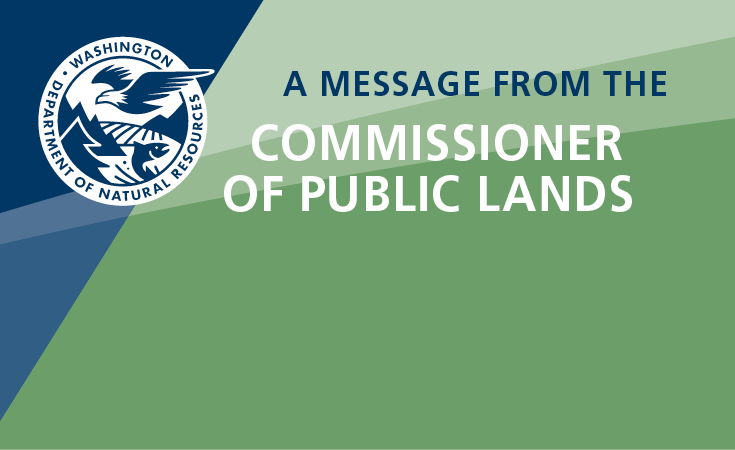
Forest and Trust Lands
Trust lands managed by the Washington State Department of Natural Resources are different than other publicly managed lands: They come with a legal responsibility to generate revenue for their designated beneficiaries, such as schools, counties, and critical local services.
DNR manages more than 2 million acres of forested state trust lands for long-term timber production, specific habitat objectives, and protection of clean, abundant water. These forests often provide public recreation opportunities, too.
As stewards of the state’s lands and natural resources, DNR draws upon a variety of staff, including foresters, engineers, geologists, biologists, archaeologists, hydrologists, economists, and others as management activities are planned. All 2.4 million acres of DNR-managed forested lands are certified under the Sustainable Forestry Initiative® (SFI), and 176,000 acres of those lands are also certified by the Forest Stewardship Council® (FSC). Certified forests are grown to an approved set of standards that demonstrate environmentally responsible, socially beneficial, and economically viable management practices. You can learn more about DNR's commitment to sustainable forestry on our Forest Certification page.
State Trust Lands
At statehood in 1889, the U.S. Congress granted Washington millions of acres of land to support public institutions such as funding the construction of public K-12 grade schools statewide, state universities, other state educational institutions, and prisons. Today, DNR manages 3 million acres of these federally granted trust lands to provide a continuous flow of revenue to beneficiaries through revenue-producing activities such as:
- Harvesting timber, biomass byproducts, and other forest products
- Leasing lands for agricultural purposes, such as orchards and vineyards, irrigated agriculture, dryland crops, and grazing
- Leasing communications sites, mining and mineral leases, wind farms and energy production, commercial properties, and rights of way.
In addition to earning income, activities on trust lands are managed to protect habitat for native plant and animal species, provide clean and abundant water, and offer diverse public recreation opportunities. As a trust land manager, DNR is obligated to follow the common law duties of a trustee, which include generating revenue, managing trust assets prudently and acting with undivided loyalty to trust beneficiaries (Washington Supreme Court: Skamania vs. State of Washington, 1984)
State Forest Lands
DNR also manages hundreds of thousands of acres of state forest lands that help fund services in many counties and contribute to the state General Fund—earmarked for education. About 546,000 acres are State Forest Transfer trust lands that were acquired by 21 counties in the 1920s and 1930s through tax foreclosures. Unable to manage these mostly harvested and abandoned lands, counties deeded them to the state to manage as trust lands. In exchange, the county and the taxing districts in which the land is located are given most of the revenue from timber sales and other revenue-producing activities. These lands are managed in a manner similar to the federally granted trust lands. An additional 80,000 acres are State Forest Purchase trust lands—chiefly, they are valuable forestlands either purchased by the state or acquired as a gift.
Community Forests
As Washington’s population grows, more suburban development occurs in previously forested areas. When lands are converted from forestry, the state loses the vital benefits that forests provide in the ecosystem—wildlife habitat, clean water for people and salmon, recreation, clean air, and carbon storage. Conversion also puts local natural resource-based industries and jobs at risk, along with the ecological, economic, and social values these forests provide to the community. In 2011 the state Legislature, the Governor, and the Department of Natural Resources (DNR) created a new tool for local community partners to participate in protecting working forestlands that benefit their communities—the Community Forest Trust.
Community forest trust lands are different from other state trust lands that DNR manages for the long-term benefit of the trust, where revenue generation is the primary focus. In contrast, community forests can be managed for other benefits, including watershed protection, recreation, fish and wildlife habitat, grazing, and timber production. In 2013, lawmakers designated the Teanaway Community Forest as the first community forest in Washington.


